Tag: LM386
-
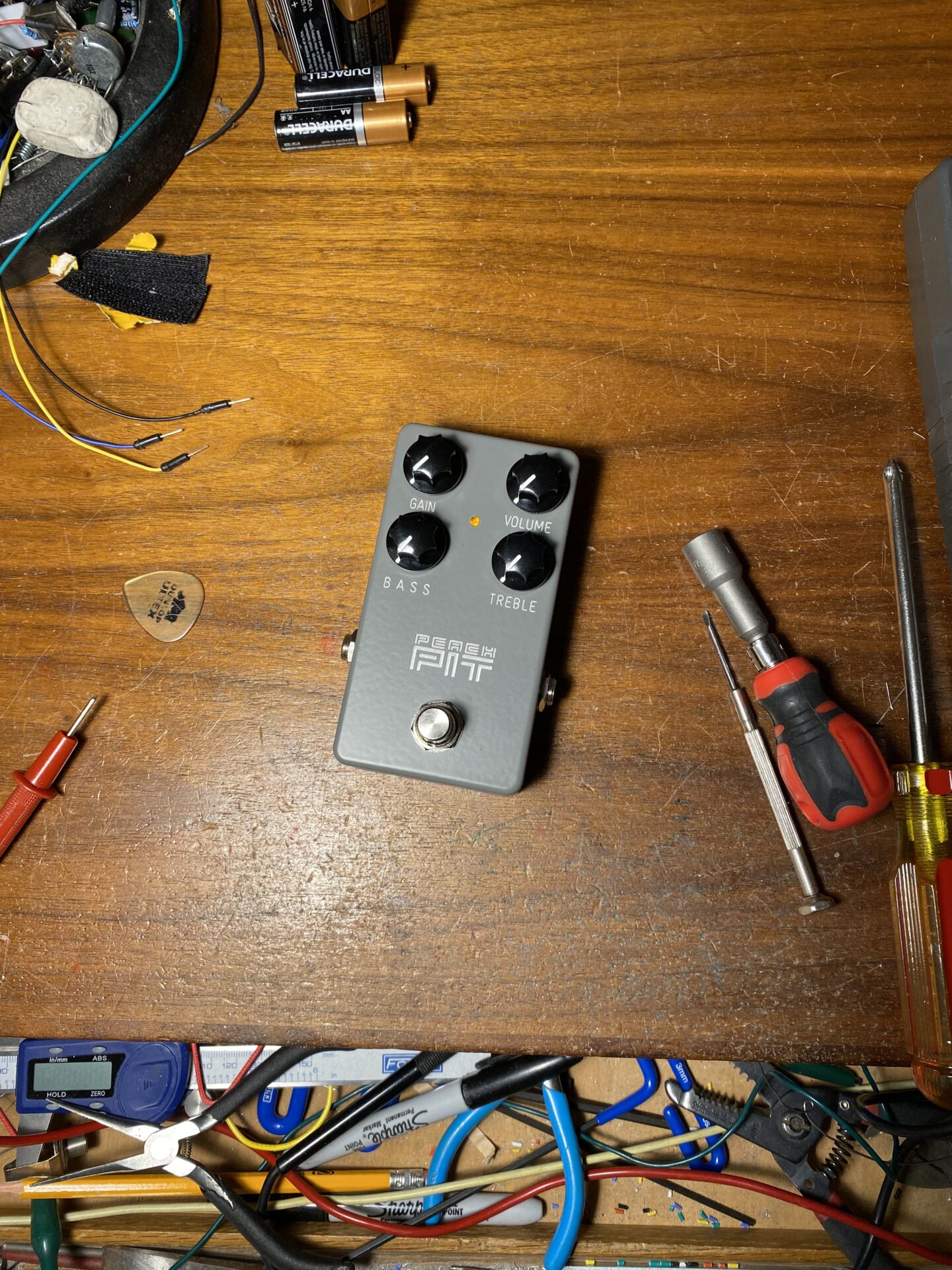
Peach Pit
This is my take on the Frantone Peach Fuzz. Peach Fuzz is an op-amp buffer into a pair of LM386 in series, followed by a tone control similar to the Big Muff. It uses a dual op-amp but only one of the op-amps is used. Frantone was one of the early “boutique” small name builders.…
-
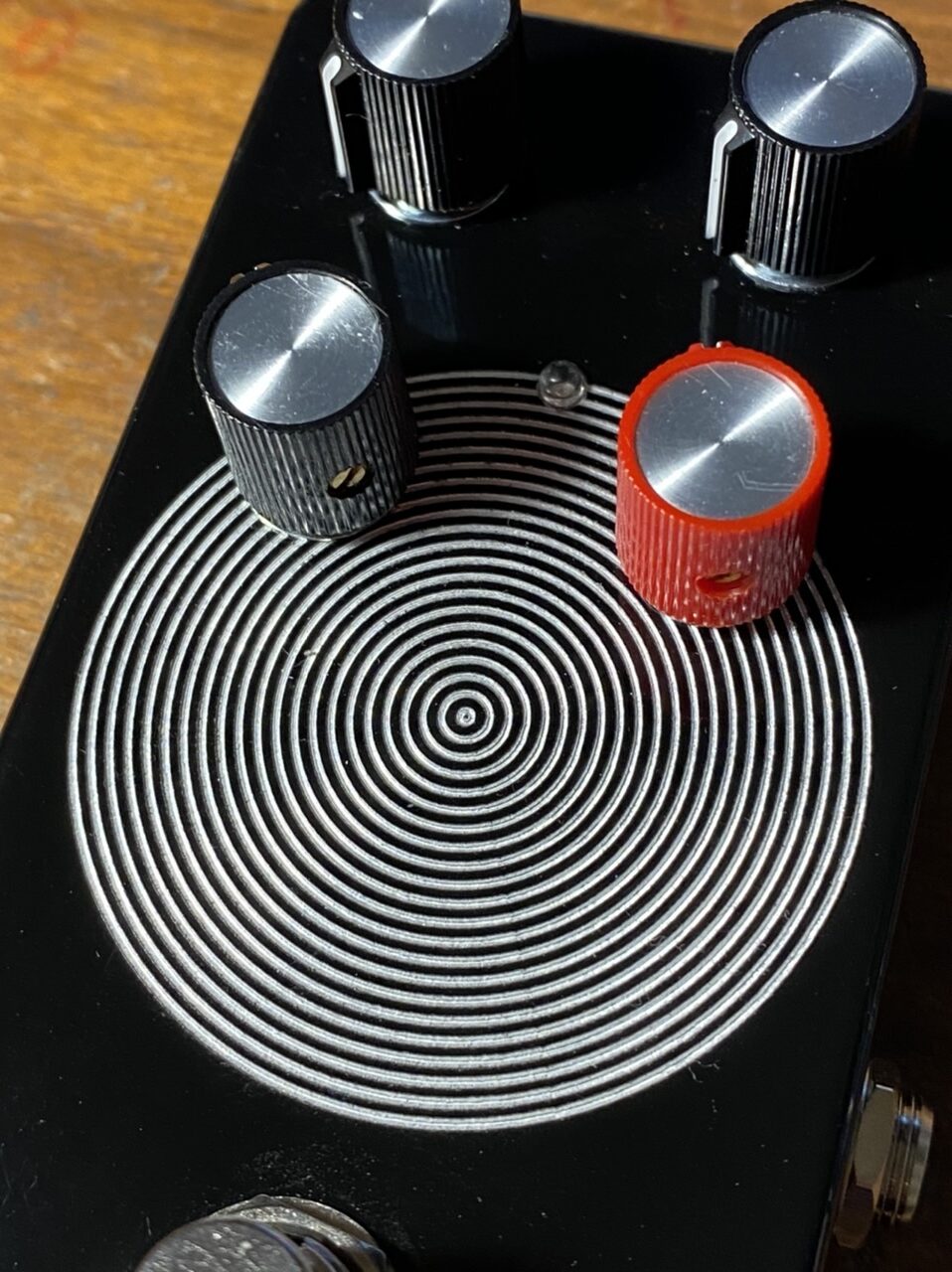
Ugly Face Circles
I made a few small updates to Ugly Face PCB. I needed to do a build to make sure that everything is working as it should. I ordered these boards from PCBWay.com. The service is a very reasonably priced which makes them great for prototyping. I soldered up the board. This time I used a…
-
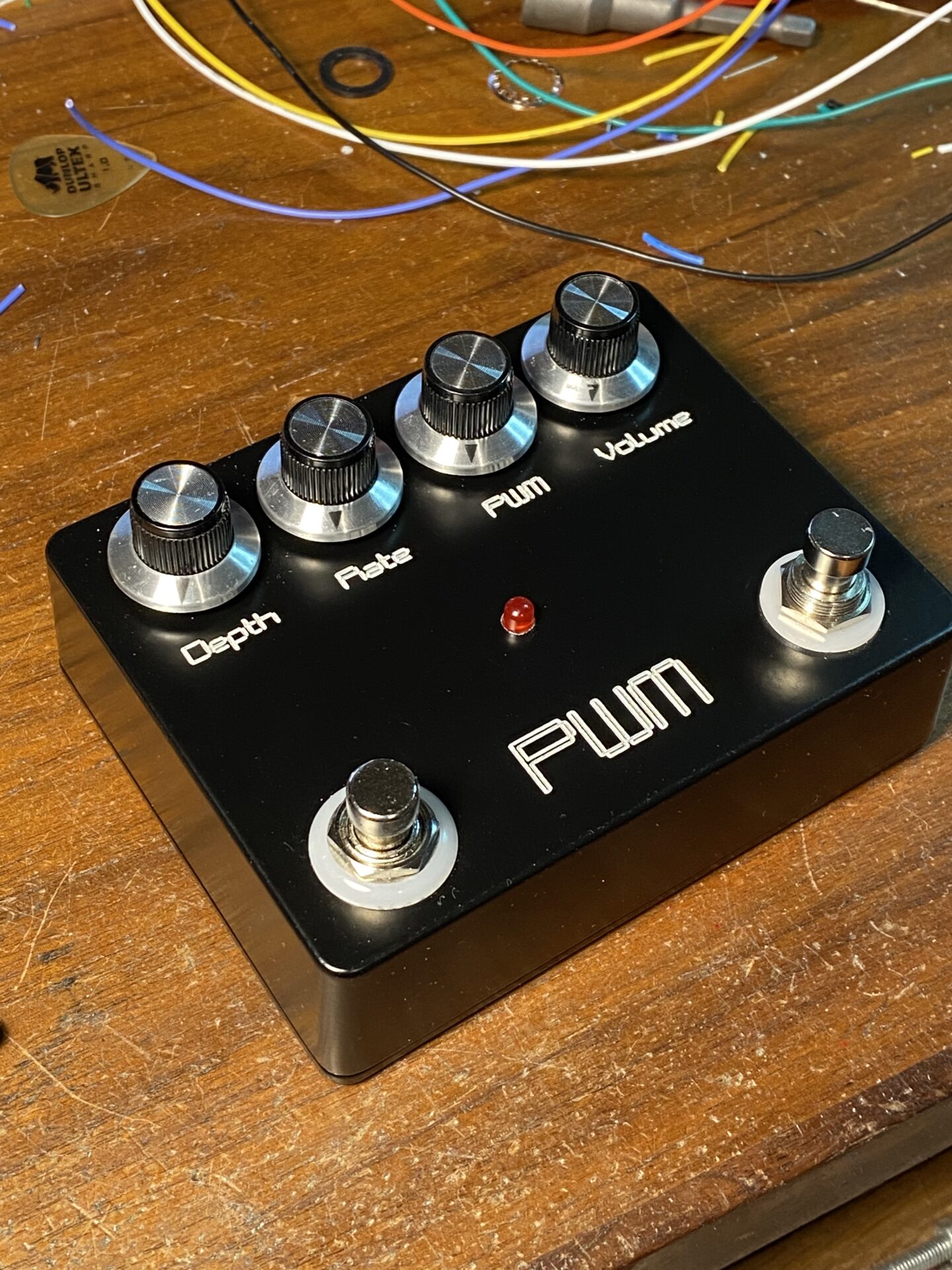
PWM Build
I built another PWM. This is a a crazy noise maker. Almost more of a synth than guitar pedal. It has a great distortion sound but the output is extremely compressed, which makes it hard to use a band situation. That said the sound is unique! This circuit cam from Tim Escobedo’s Circuit Snippet website,…
-
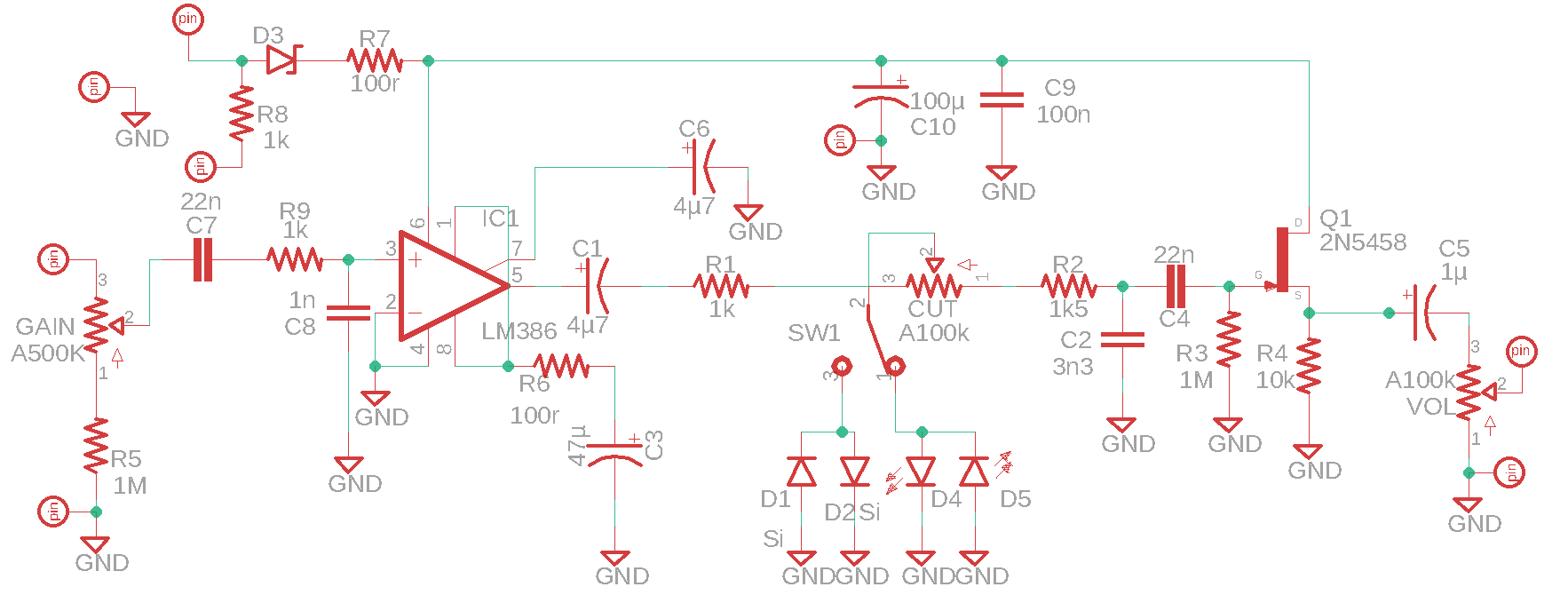
The Baron
This is my second entry in the End of Days Fuzz Challenge! The idea was to build a circuit similar to the Proco Rat replacing the LM308 with the LM386. The LM308 is a single op-amp the LM386 is an audio amplifier. The chips are similar but also very different. LM386 The LM386 is similar…
-
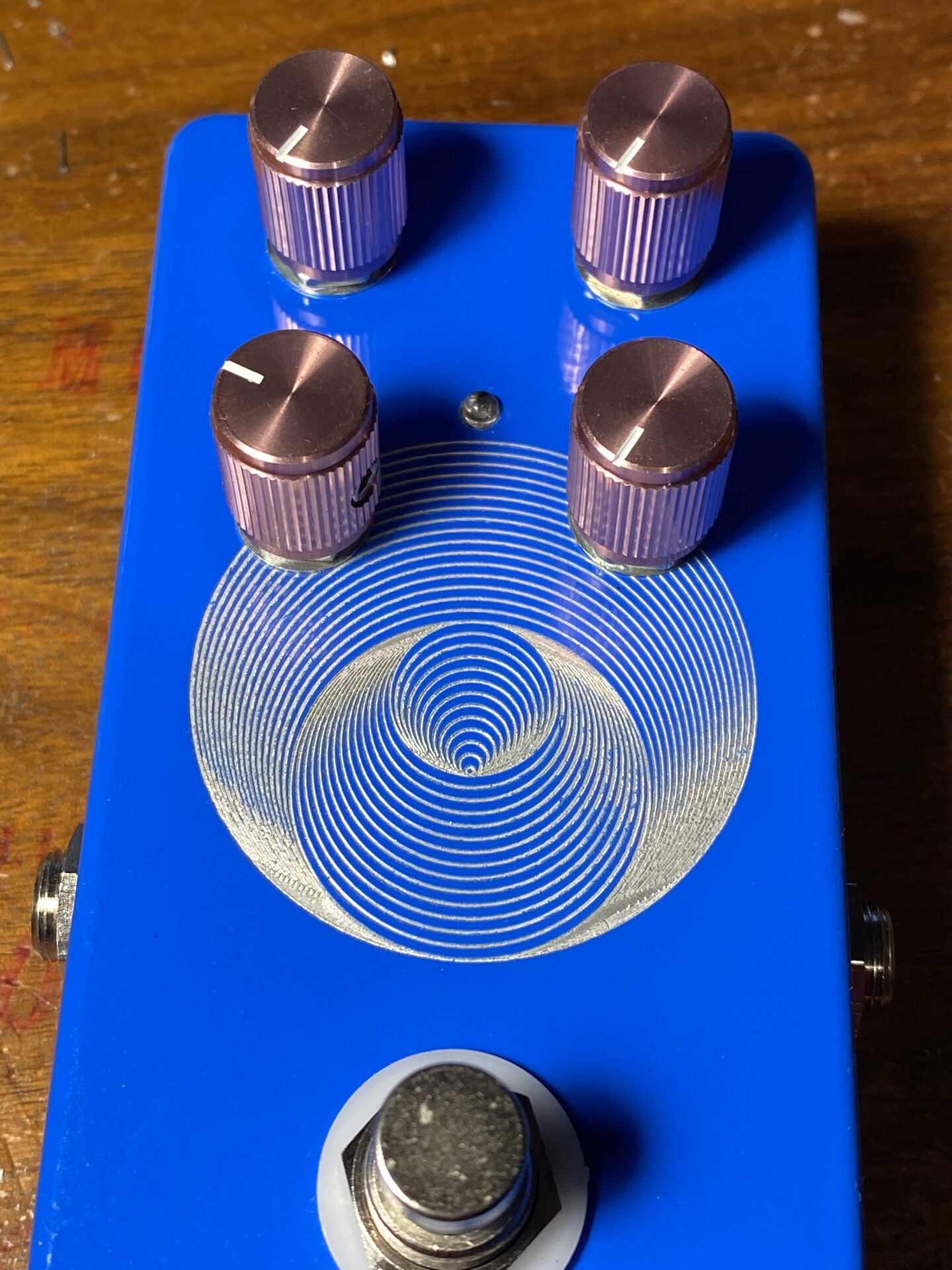
Ugly Face blue
A blue Ugly Face. I used PCBs from PCBWay.com and put everything into a blue powder-coated enclosure from Tayda. I wanted to put some blue knobs on this enclosure but didn’t have any on hand. I didn’t want to place an order for four knobs. Looking through my parts bin, I found these pink aluminum…
-
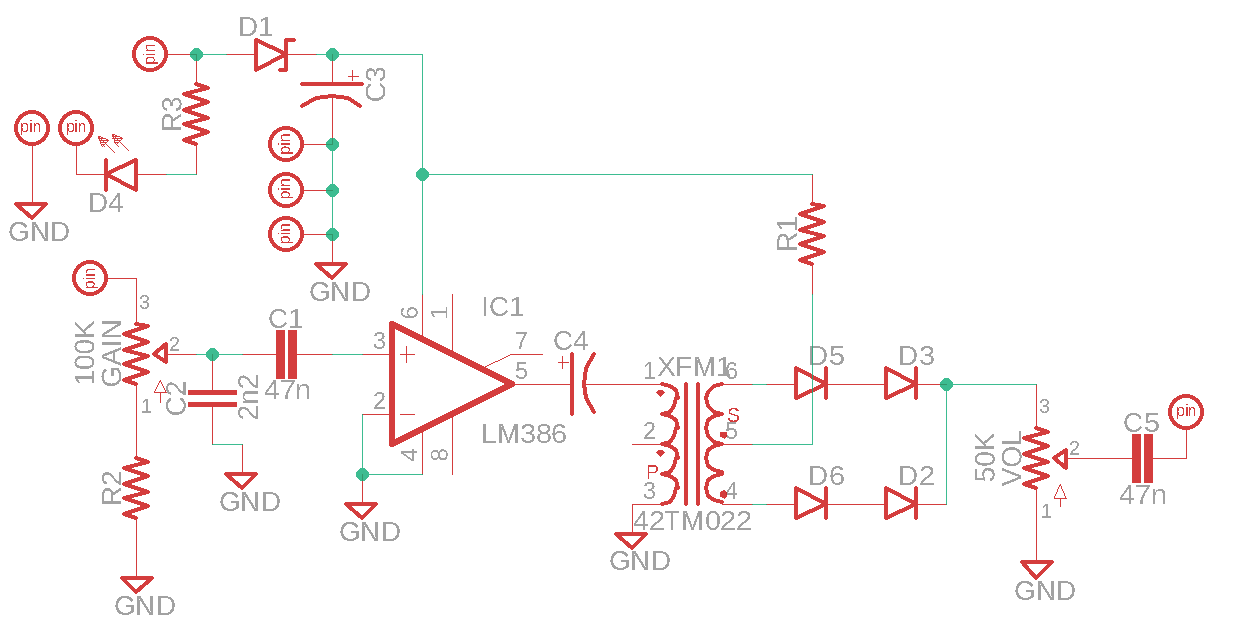
Bobtavia analysis
This is a quick look at how the Bobtavia works. The Bobtavia is uses the LM386 to amplify the input signal. In the default setup the LM386 has a gain of 20. The output of the LM386 runs through a 220µ C4 cap into a small audio transformer. The input appears at one output of…
-
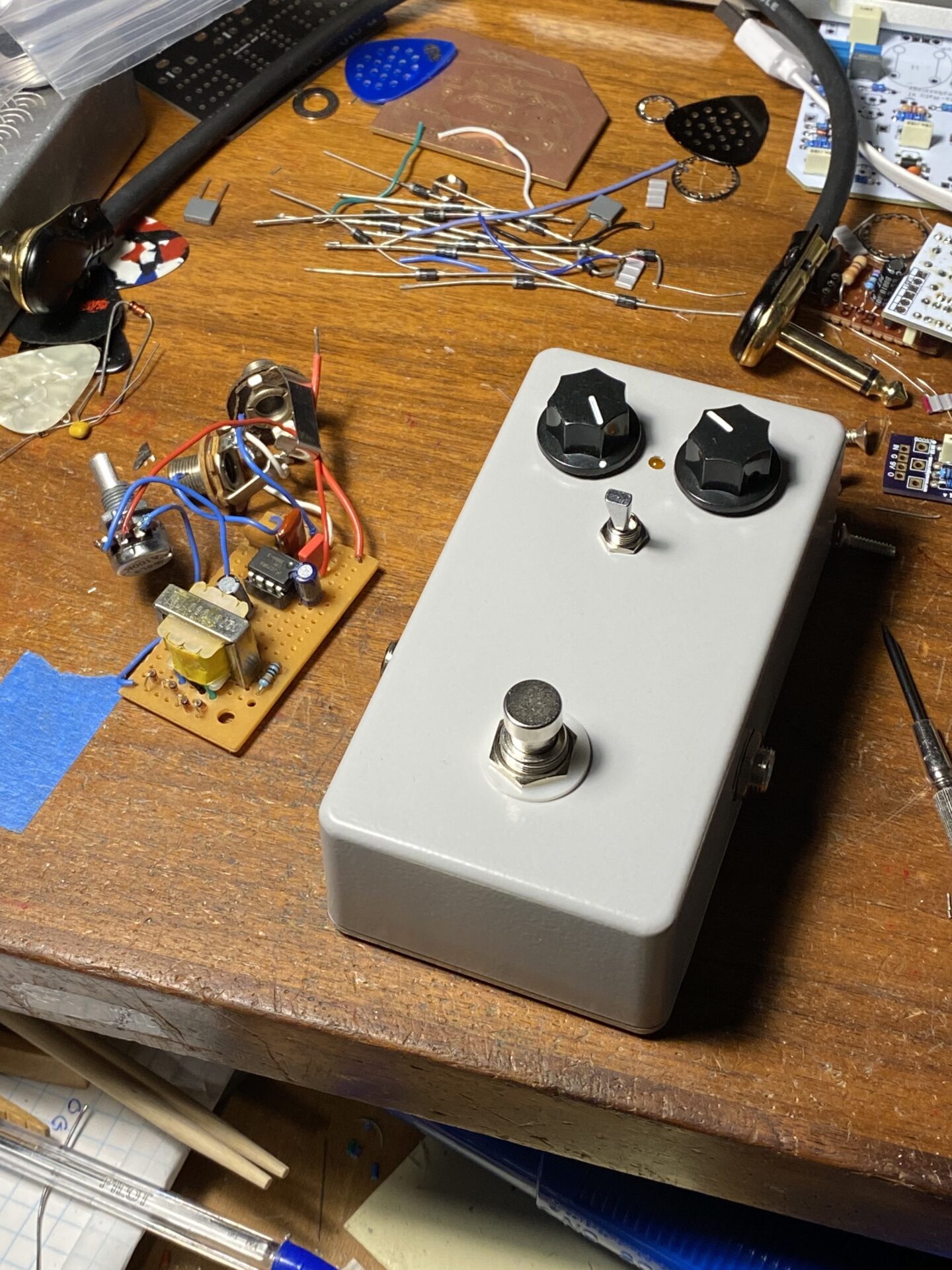
Bobtavia by Bob Starr
Bobtavia is an old-school DIY octave fuzz. It’s a lot like the Roger Meyer Octavia but uses an LM386 instead of transistors. The Bobtavia uses a transformer like the original Octavia and the Maestro Brassmaster. What’s nice about the Bobtavia is its simplicity. The whole circuit is just a handful of parts. This was one of the first…
-
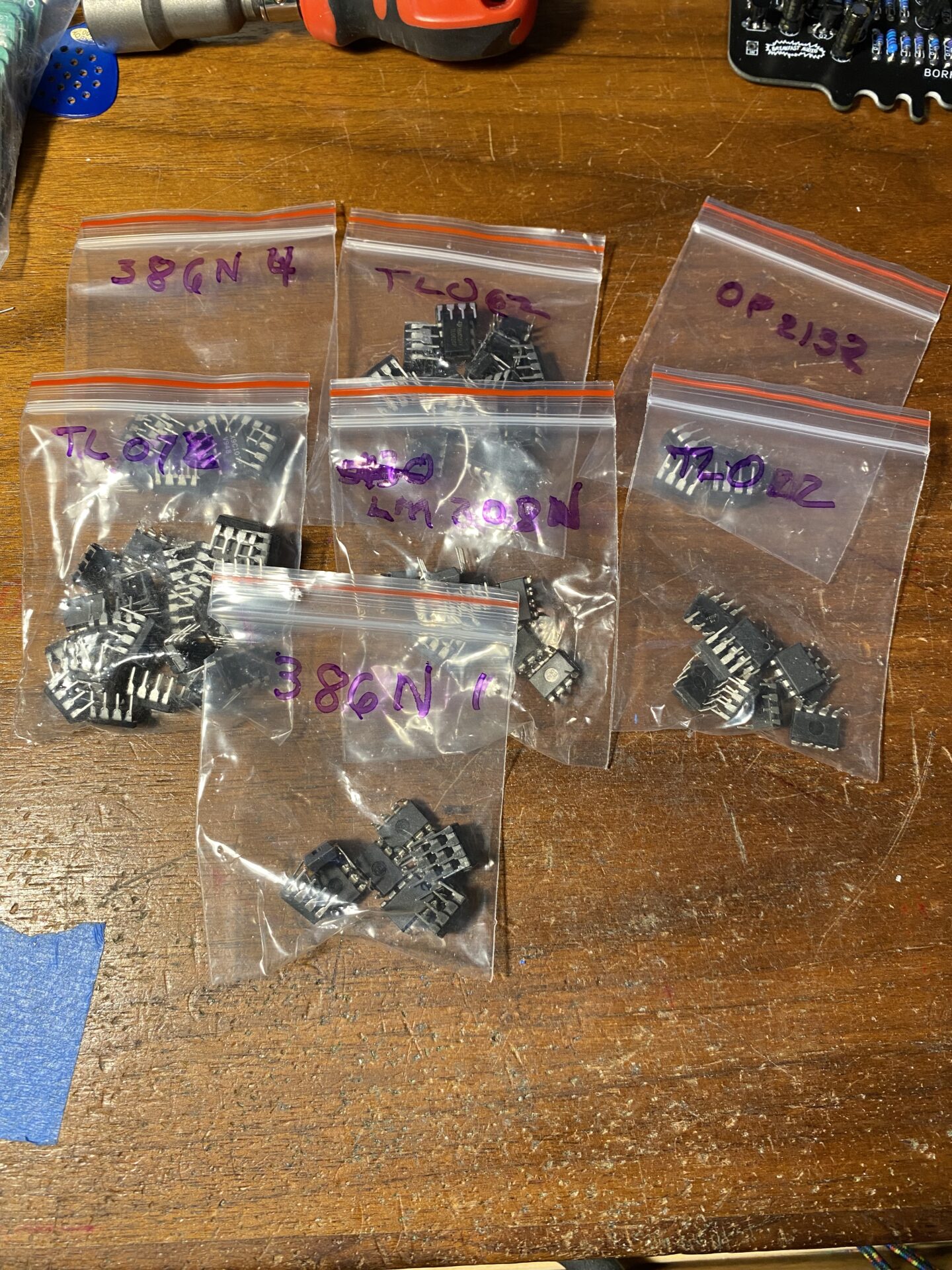
Fake op-amps
I bought some op-amps from Aliexpress a few days ago. They seem to be working. I patted myself on the back for getting a such a deal, they were about $0.08 each! All of the parts seem to be working except fro the LM308 which didn’t work at all. After watching this video, I’m starting…
-
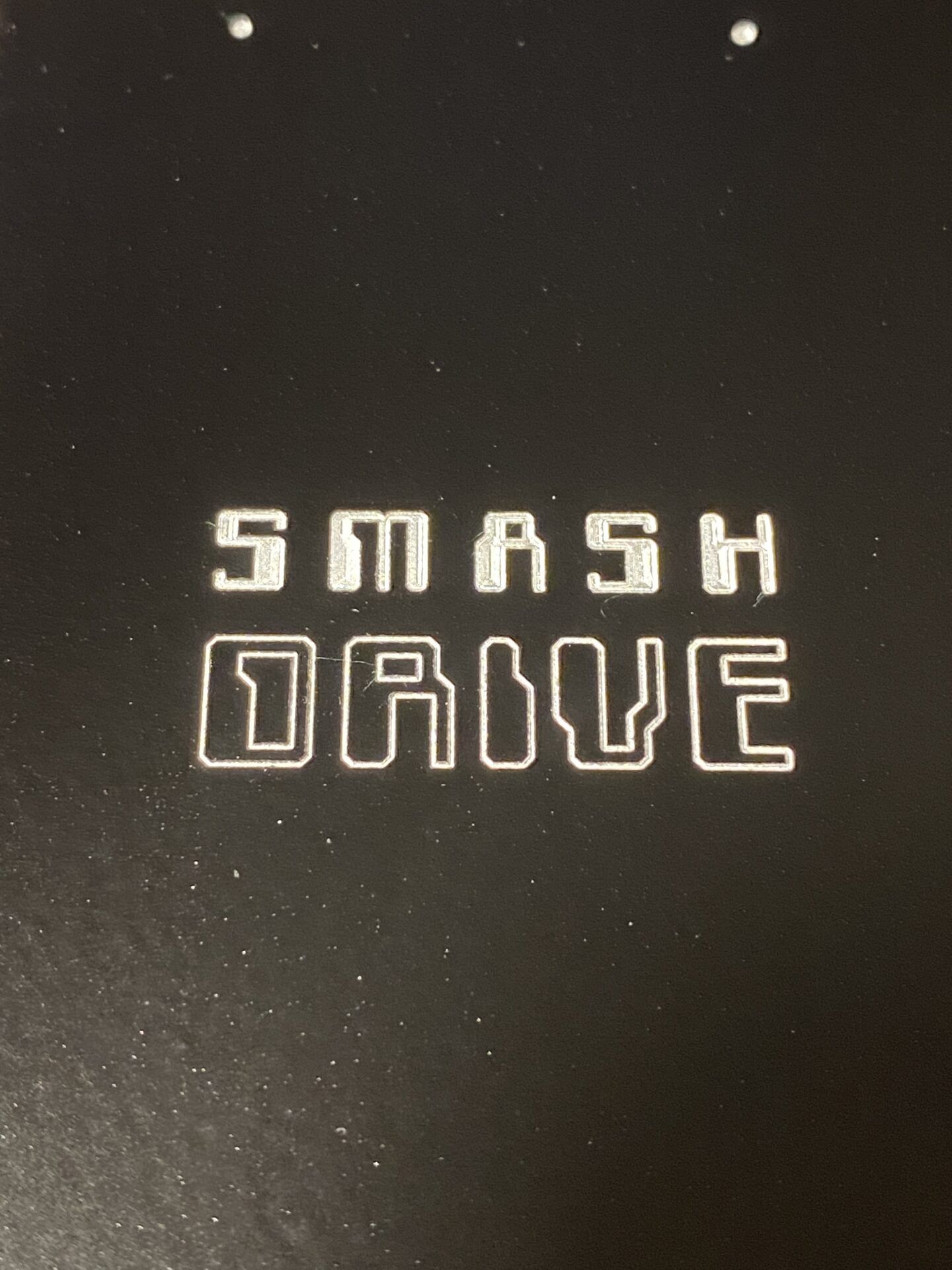
Smash Drive Aron Nelson
Smash Drive is a DIY community project by Aron Nelson, who runs the DIYStomboxes.com forum. Smash Drive is a overdrive/distortion built from the LM386. Its simple and easy to work with. you’ll find the 386 in many guitar circuits. its cheap and easy to get. Projects that use the LM386 RunOffGroove Ruby Earth Quaker Devices…
-
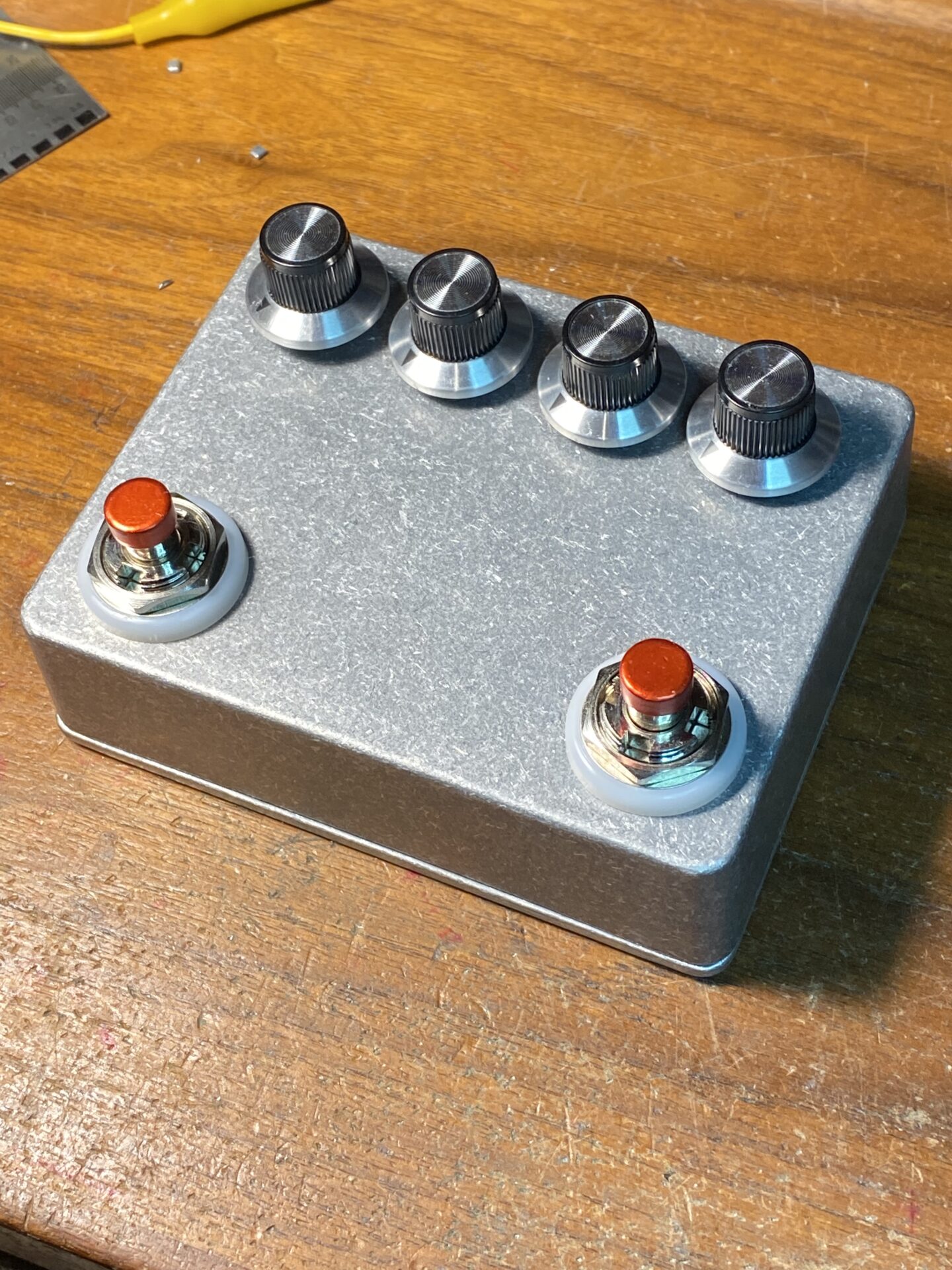
PWM demo
This is a demo of Tim Escobedo’s PWM. see my build page for more info about this circuit: http://www.super-freq.com/tim-escobedo-pwm-pcb-build/ Here is another song demo where the PWM was used on one track in the mix.
-
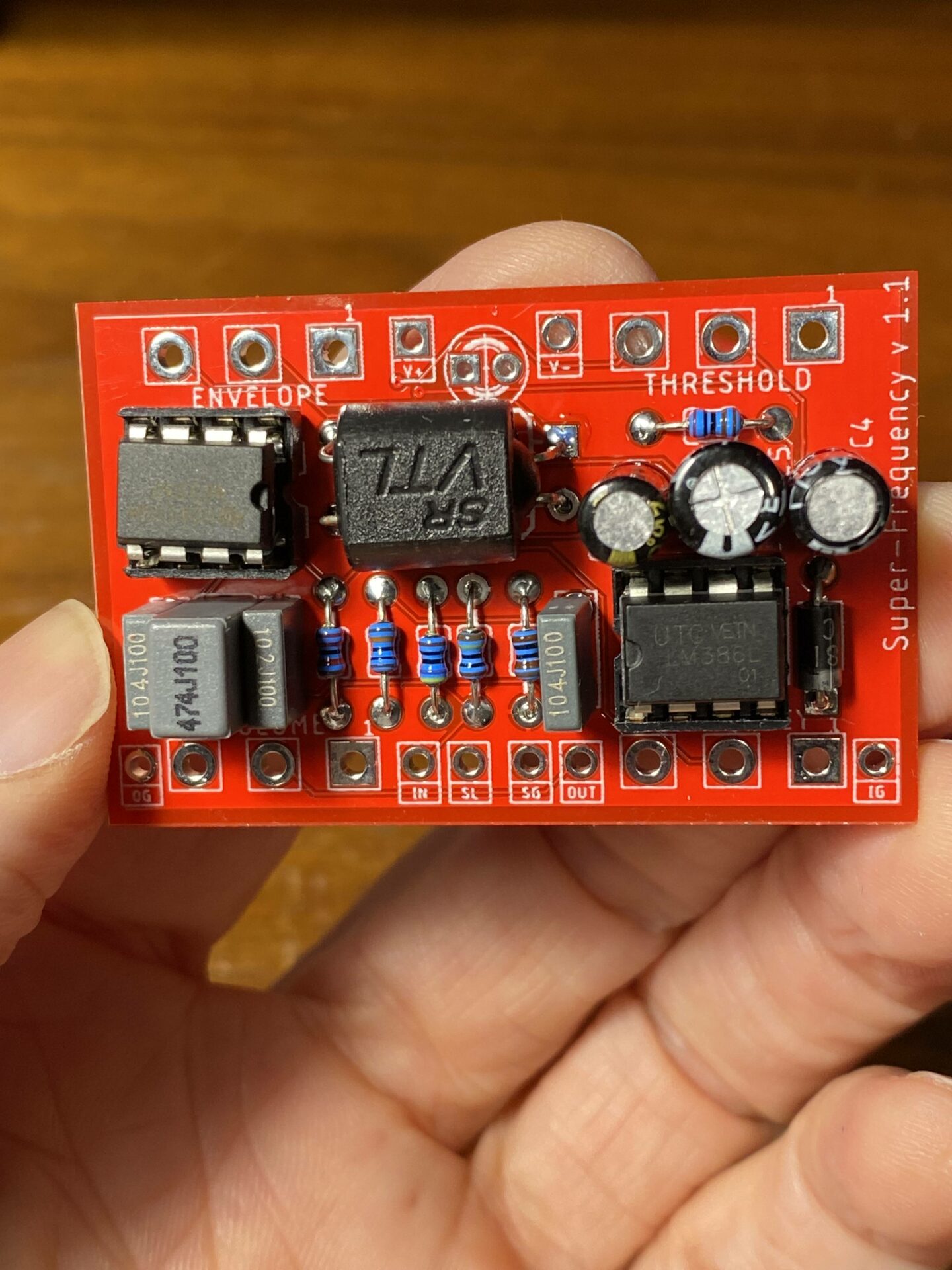
Ugly Face PCB on PCBWay
I designed this PCB for Tim Escobedo’s Ugly Face and had it manufactured at PCBWay. I used Eagle PCB to design the board. The process was not hard with a little research. I started by finding the PCBWay Eagle DRU file. This tells design rules that PCBWay will accept. This includes the minimum trace size…